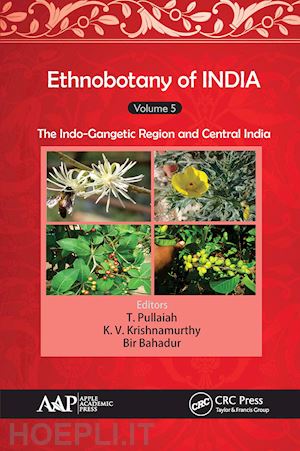Ethnobotany of India, Volume 5: The Indo-Gangetic Region and Central India is the fifth of a five-volume set on the ethnobotany of India. Bringing together in one place information on the ethnobotany of the Indo-Gangetic Region and Central India, this volume presents the valuable details of the ethnobotanical aspects of many plants of the region. Competent authors have been selected to summarize information on the various aspects of ethnobotany of India, such as ethnoecology, traditional agriculture, cognitive ethnobotany, material sources, traditional pharmacognosy, ethnoconservation strategies, bioprospection of ethno-directed knowledge, and documentation and protection of ethnobotanical knowledge.With chapters written by experts in the field, the book provides comprehensive information on the tribals (the indigenous populations of the region) and knowledge on plants that grow around them. The volume looks at ethnic diversity of people of the region ethnic food plants and food preparationethnomedical aspects of plants of the region, including hepatoprotective properties, uses to alleviate skin diseases, contraceptive uses, the trade in Indian medicinal plantsmulitidisciplinary approaches for herbal medicine explorationThe volume includes the details of the plants studies, their medicinal uses, their scientific names, the specific parts used, and how the plants are used, providing the what, how, and why of plant usage. The book is well illustrated with 23 color and 6 b/w illustrations.Together, the five volumes in the Ethnobotany of India series presents the available ethnobotanical knowledge of India in one place. India’s ancient and culturally rich and diverse information and use of ethnobotany will be valuable to those in the fields of botany and plant sciences, pharmacognosy and pharmacology, nutraceuticals, and others. The books also consider the threat to plant biodiversity imposed by environmental degradation, which impacts cultural diversity.











